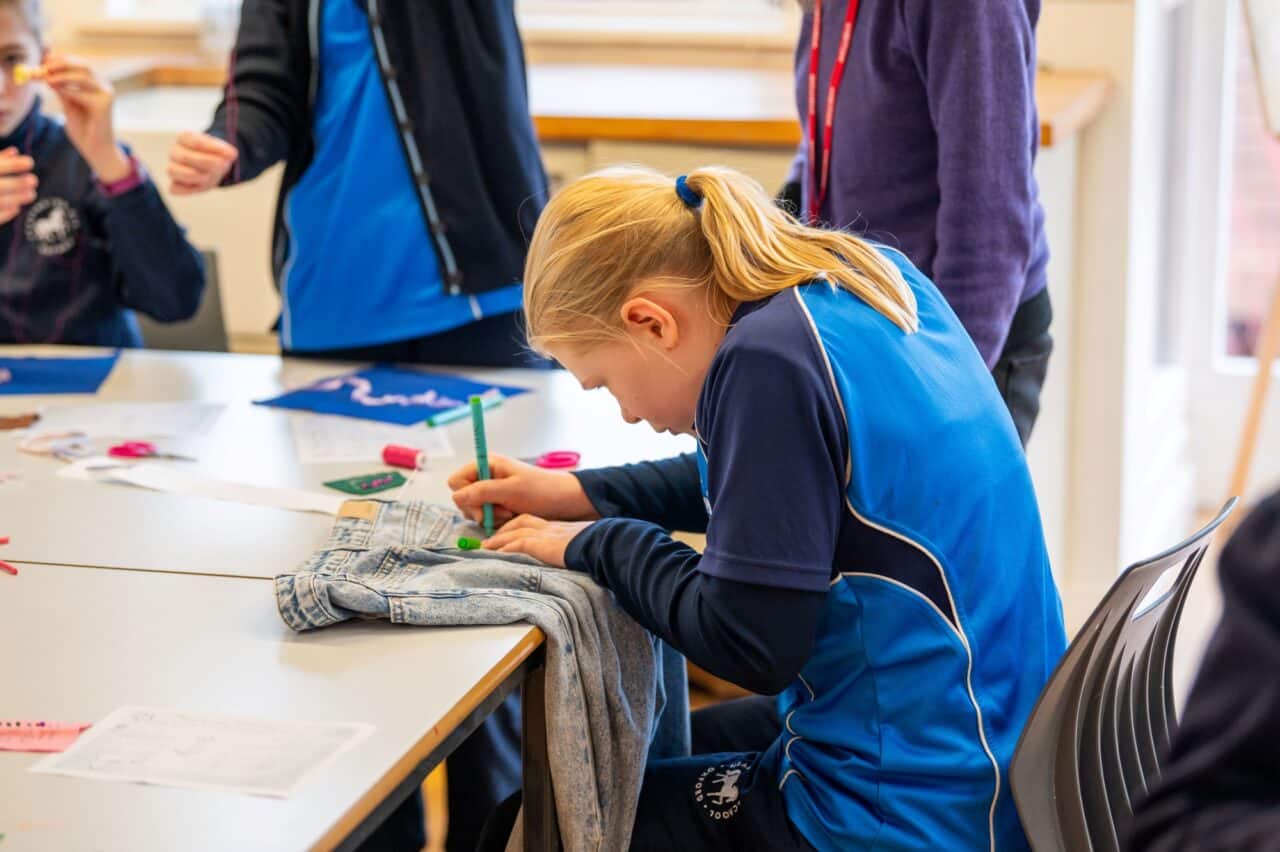What is Character Education?
Almost everyone involved in education, from the teachers and staff who work in schools, the pupils who attend them, and the parents who value them and entrust their children to their care, understand that when it comes to considering the aims of education, fostering good character is just as important as academic attainment. For many, acquiring the attributes necessary for flourishing in life should in fact be the ultimate aim of school – which explains the focus here at Headington on ‘Future Ready Girls’, a phrase that suggests a deliberating wide-ranging approach to thinking about our purpose as an educational institution.
But what is ‘good character’? Most of us probably have an idea of the sorts of qualities we want young people to develop as they navigate their formative years – we want them to be happy and that means being able to respond positively when things (inevitably) don’t go their way. We hear a lot about resilience, robustness and mental toughness: all different ways of describing qualities that most would surely argue are beneficial for all. But whilst these sorts of labels can have a somewhat ‘old-school’ ring to them (I’m reminded of the sign outside Crunchem Hall in the new Matilda movie – ‘No Snivelling’), a modern approach to character education looks carefully at how these sorts of qualities can be developed by schools in ways that are not only implicit but explicit. In other words, more and more schools are thinking carefully about the many subtle (and less subtle) ways in which being in a school environment supports our young people through the process of developing those virtues over time.
At Headington we talk a lot, and for good reason, about our ‘6Cs’, which act as a useful and memorable shorthand for the kind of qualities we want the girls to develop during their Headington journey. Confidence, Collaboration, Compassion, Creativity, Curiosity, Courage – these are all central to the Headington community and referencing them frequently is important in helping us all develop a shared language and common aims. When girls demonstrate one of the 6C qualities in school it can be enormously effective to reward them with a ‘courage’ or ‘compassion’ merit, showing them and their peers that their behaviour is both recognised and worthy of celebration. In form time, girls spend time reflecting on how they have developed 6C qualities at school, a process which helps them identify areas of particular personal focus.
It’s fair to say that a great deal of character education is directly ‘taught’ in school through the curriculum. PSHE lessons are, of course, absolutely integral to ensuring girls are exposed to appropriate moral vocabulary and are offered opportunities to focus specifically on character development in a taught environment. Our pastoral staff work tirelessly to ensure that within the PSHE curriculum girls are involved in activities that help them navigate personal relationships, explore the most appropriate ways to deal with personal and professional challenges and to think carefully about the benefits of self improvement. The PSHE programme also offers the girls some superb opportunities to hear directly from individuals with rich and inspiring life experiences, many of whom have demonstrated good character in their own lives and will tell stories that will stay with the listener for years to come. But character education also permeates the wider school curriculum and is well integrated into the taught content in a wide range of subjects. A lot can be learned, for example, by discussing the moral dilemmas presented to key characters in a novel, or indeed to historical figures real or imagined. The truth is that there are opportunities in almost all of our classrooms to take the time to circle back and link taught content directly to the School’s 6Cs.
But it’s not just what is taught that matters when it comes to developing character, it’s how it’s taught. Adopting appropriate teaching and learning strategies is a recognised and important part of ensuring that we leverage the school experience effectively for the very best character education. A mantra we often hear is that ‘failure needs to be normalised’, but teachers need to be careful to ensure that failure is carefully managed. Every young person is at a different stage on the journey of developing the mental toughness required to cope well with failure and even those with good resilience can’t cope with repeated failure ad nauseam. The level of challenge needs to be appropriate for age and ability and teachers need to recognise that sensitive personality types don’t always cope well with getting things wrong. When failure happens, it needs to be managed well and at Headington this manifests itself in teachers who the pupils describe as ‘supportive’ and ‘approachable’, which is crucial in creating a safe environment where failure can be put to good use.
There are many other examples of where carefully considered approaches to teaching and learning can create fertile ground for good character development in the classroom. Discussion-based learning can be an excellent way of building confidence and tolerance, and of encouraging young people to learn how to navigate the complexities of a large group of peers with mixed abilities and different viewpoints. Group work and cooperative learning gives girls a forum in which to learn how to work well with others, but of course it should be appropriately counterbalanced by independent study which helps them to take ownership and control of their decision making. Additionally, experiential learning, as practised in the form time sessions described earlier, has its place in a range of classrooms at Headington, and has been shown to help develop character with the inclusion of reflective activities at the end of lessons or at key points in the delivery of a topic or throughout project work.
If character education is something our pupils can receive by virtue of the school environment and culture, and if it’s also directly taught in class as part of the curriculum, what about the benefit of the activities and events that pupils can opt into as part of a programme of co-curricular activities? Many adults look back on ‘key’ moments in their formative years that, with the benefit of hindsight, feel like turning points or catalysts for personal development and growth. For a lot of people, it’s memories of sporting success (or failure) that stand out, whereas for others it was taking part in a drama or dance performance, or being pushed into a first big public speaking engagement. Creating an environment that encourages engagement in extracurricular activities of every sort is a crucial part of being a school that develops good character, but to be truly effective, this regular programme of activities needs to sit alongside a carefully considered range of trips and events that remove young people from their usual routines. It’s interesting that post-Covid there has been a notable increase in parental interest in school trips of every sort. For those with younger daughters, the focus is outward bound activities that encourage mixing and physical challenge, whereas for those with older children the demand for cultural trips and international travel seems to have returned to levels exceeding that to which we were accustomed pre-Covid. Clearly, the lack of opportunities available for young people over the last couple of years has brought the benefits of this kind of experience into sharp relief for us all.
Less in demand than trips, but just as important, is a meaningful programme of charitable and service activities that nudge young people into situations where working for the benefit of others is the focus. Most good schools will have a range of strong links with local community groups, care homes and primary schools. Here at Headington we are no different and it’s a priority to get pupils engaged with our local community through one-off events and fund-raising activities. Being exposed to these sorts of activities helps young people form personal habits and character commitments that can stay with them for life.
The outcome of all this should be that when pupils are nearing the end of their time in school, they have already begun the process of understanding their own character, of reflecting and recognising their relative strengths and weaknesses and of seeking out opportunities to develop and improve. We want our young people to behave in such a way that demonstrates their good character and positive virtues and to develop the skill of deliberately taking the most appropriate action in situations where these virtues collide. A tall order, but a challenge to which I think they are all equal.



